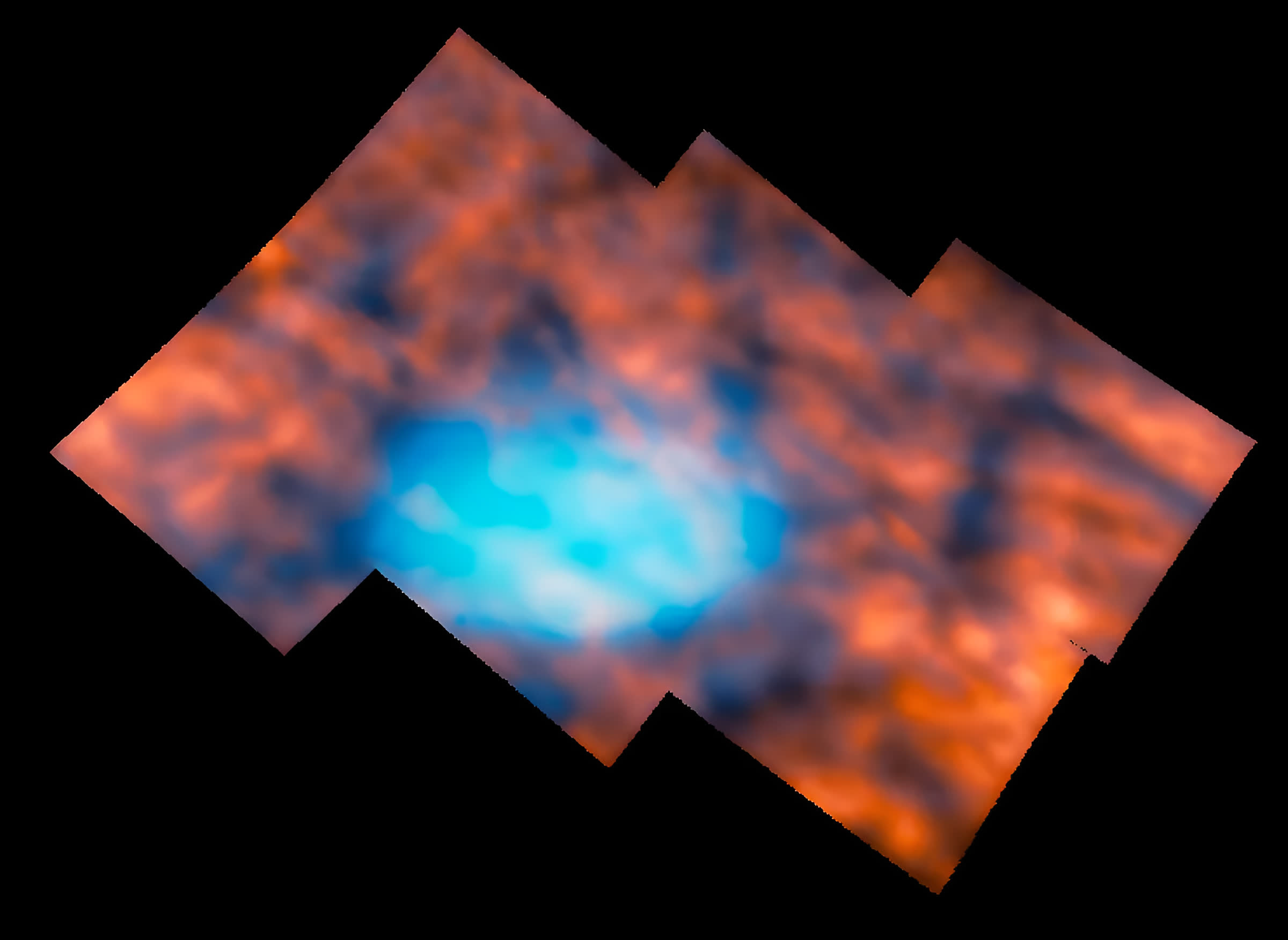In context: The Great Red Spot, a colossal storm larger than our entire planet, is believed to have raged across Jupiter for over three centuries. We've long known this gas giant has an incredible weather system, with winds blasting at three times the speed of a tornado. But despite its size and intensity, scientists thought the upper atmosphere above it would be relatively calm. Boy, were they wrong.
Observations from the James Webb Space Telescope have revealed an atmospheric wonderland of bizarre structures and activity looming over Jupiter's Great Red Spot. It's a turbulent skyscape sculpted by immensely powerful atmospheric gravity waves, making the region at least as dramatic as Earth's famed auroras.
"We thought this region, perhaps naively, would be really boring," admits Henrik Melin of the University of Leicester, who led the study. "It is, in fact, just as interesting as the northern lights, if not more so. Jupiter never ceases to surprise."
JWST used its infrared vision to peer through the hazy layers enveloping Jupiter. The telescope's Near InfraRed Spectrograph (NIRSpec) captured details invisible to Earth-based scopes in July 2022, revealing dark curving arcs and bright spots across the upper atmosphere.
While sunlight accounts for most of Jupiter's atmospheric glow, these curious features signaled that something more was energizing the areas just above the Red Spot.

One way the atmospheric structure can change, Melin explained, is through gravity waves – similar to waves crashing on a beach and creating ripples in the sand. These waves are generated deep in the turbulent lower atmosphere around the Great Red Spot. As they travel upward, the gravity waves alter the structure and emissions of Jupiter's upper atmosphere.
On Earth, we experience gravity waves too, but the ones on Jupiter put ours to shame. The waves rippling over the Great Red Spot are far more turbulent and energetic than anything we experience on Earth. These findings are published in the journal Nature Astronomy.
Looking ahead, researchers hope to track these waves to understand how energy is distributed through the planet's atmosphere and how it causes observed structures to move.
The observations could also provide valuable context for the European Space Agency's Jupiter Icy Moons Explorer (JUICE) spacecraft when it arrives in 2031. JUICE will conduct an orbital tour investigating Jupiter itself and its trio of potentially habitable moons – Ganymede, Callisto, and Europa.
